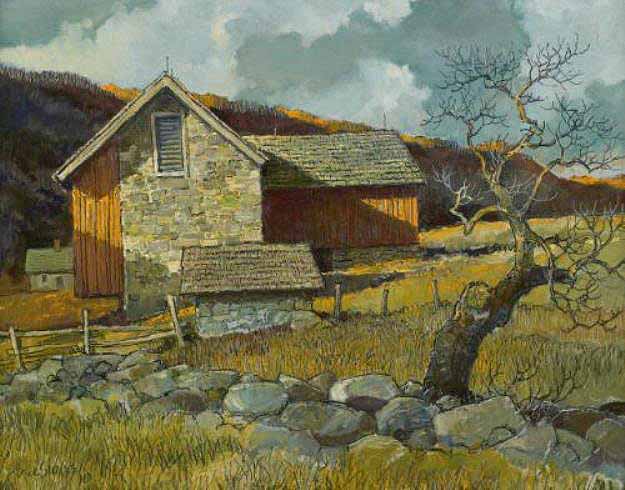In his own right, Eric Sloane was quite a remarkable character. I had the pleasure to meet him in the 70s and his work was a great influence on my collecting early American tools. FWIW, He was American's *first* weatherman. ;)

Posted on 05/12/2016 8:35:00 PM PDT by SunkenCiv
Bronze tools found in Sweden dating from 3,600 years ago were made using copper from the Mediterranean, archaeologists have shown. They now also believe that rock carvings of ships found in Bohuslan, Sweden were visual documentation of trade between ancient Scandinavia and the Mediterranean.
Most of the copper circulating in Bronze Age Europe apparently originated from Sicily, Sardinia, the Iberian peninsula - and Cyprus, going by isotope analysis...
The precious copper was exchanged for Nordic amber, which was as cherished as gold in Mycenaean Greece and in the prehistoric Middle East...
The ancient Cypriot copper industry produced relatively pure stuff, which was smelted into "oxhide ingots"... Bronze Age copper slabs that looked like nothing so much as stretched hides, with four extruding corners that were used to carry them... about 37 kilos each.
Vast quantities of ingots have been found in Cyprus, Sardinia, mainland Greece and Crete. The biggest collection was found in the "Uluburun shipwreck," that sank in the late 14th century BCE off Turkey. Underwater excavation shows that the ship carried 10 tons of ingots, all of which seem to have originated in Cyprus...
Isotope analysis of some 70 bronze daggers and axes from Bronze Age Sweden by scientists from Sweden's University of Gothenburg, headed by Dr. Johan Ling, proved that at least some originated in Cypriot copper mines. Most probably, it was traded for amber.
"Bronze was as valuable a raw material as oil is today," says Prof. Kristian Kristiansen of the University of Gothenburg´s archaeological department. It and amber were the twin engines of the Bronze Age economy, to the extent that marriage alliances are believed to have been forged between powerful families in ancient Europe in order to secure the amber trade.
(Excerpt) Read more at haaretz.com ...
That explains the Brick in both places.
LOL!
Whoops.
I don’t. Also, there is a level of denial that has arisen, apparently, since the sheer quantity of copper mined in the U.P. in prehistoric times made it into the ‘minority report’ historians’ data stream. Dating a mine or quarry is tricky, because the oldest traces were removed by the second oldest diggers, and their traces by the third oldest, etc, until nothing is left except the last. The modern copper mining dwarfed whatever went on in precolumbian times; best surviving may be on Isle Royale.
There were also many population shifts and migrations before 1492, all over the Americas, and they didn’t just smoke a peace pipe and work it out — it was ugly.
I’ve heard the outline of a migration into the Upper Peninsula (the U.P. above is the abbrev), from a really, really white guy who’s in one of the tribes up there. A few centuries ago his ancestors lived in what is now upstate New York. Their shaman of the time had a vision that they had to pull up and move to a place where the food grew under the ice (what we know as “wild rice”). So, they trekked up to the U.P., found the wild rice paradise, and wouldn’t ya know, someone was living there already.
The Rice Wars began, and went on for generations. I’m not sure of the exact outcome, perhaps it wound up a draw, but otherwise, his ancestors won.
Thank you for the books by Sloane references. Thank you for the museum in Kent, CT reference. And yes, visiting the Gransfors campus would be wonderful. All artists should sing their works, in my opinion.
In his own right, Eric Sloane was quite a remarkable character. I had the pleasure to meet him in the 70s and his work was a great influence on my collecting early American tools. FWIW, He was American's *first* weatherman. ;)

Disclaimer: Opinions posted on Free Republic are those of the individual posters and do not necessarily represent the opinion of Free Republic or its management. All materials posted herein are protected by copyright law and the exemption for fair use of copyrighted works.